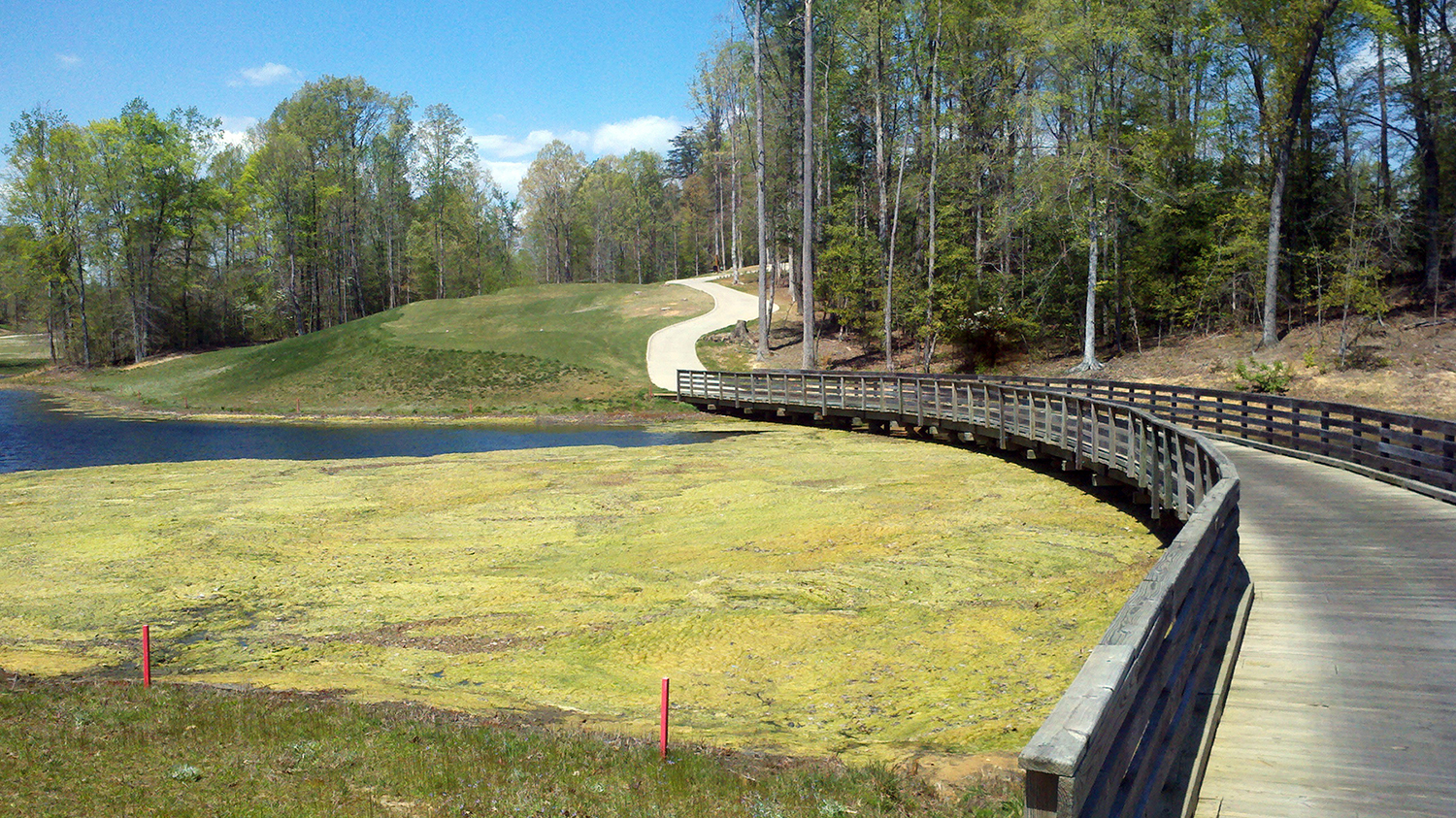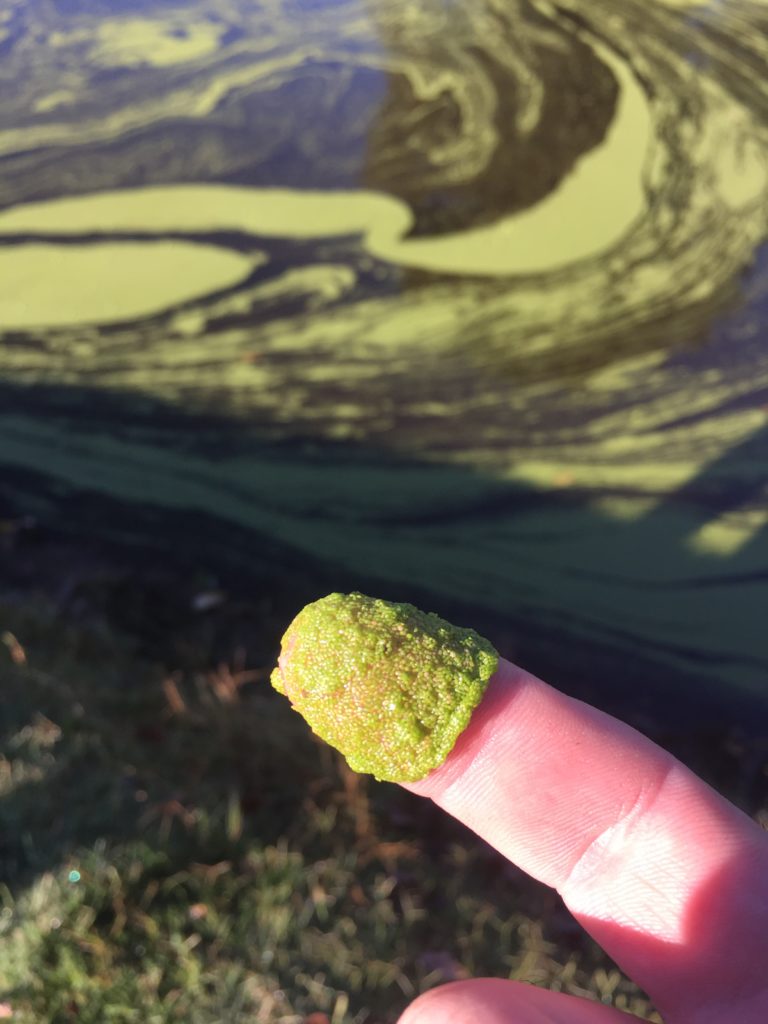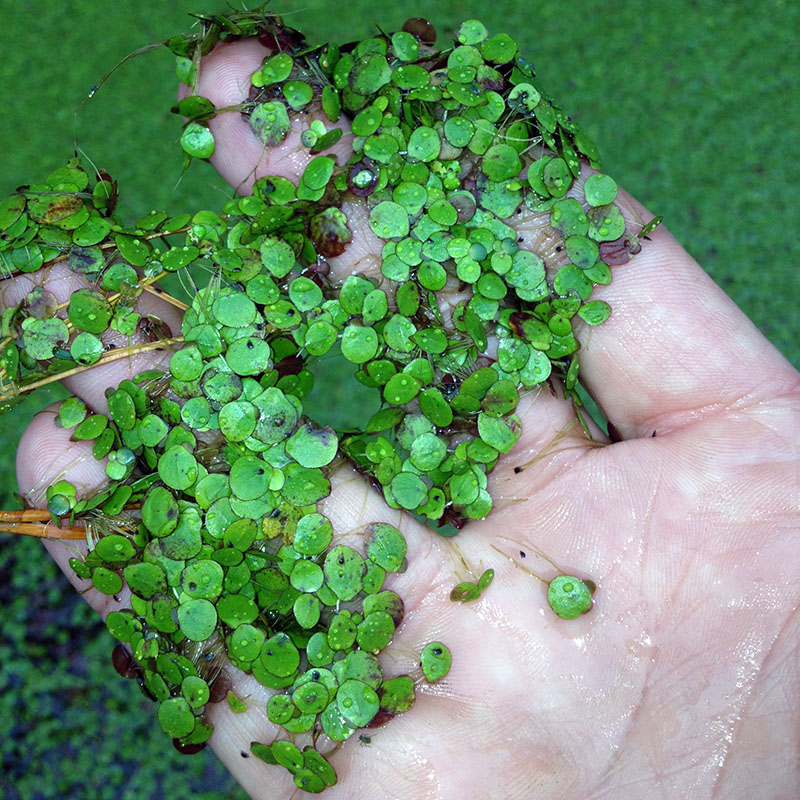
Phytoplankton, better known as algae, is present in all lakes and ponds. While more than 30,000 algae species are known to exist, we generally only become aware of it when it reaches nuisance levels that negatively impact aesthetics, recreation, water quality and ecological balance. There are many types of algae, and they can appear in different forms and colors. They have no true leaves, stems or roots and reproduces by means of spores, cell division or fragmentation. All types of algae thrive on excess nutrients in the water and require sunlight for growth. Luckily, new tools and technologies are making the management of nuisance algae blooms easier.

Lakes and ponds typically contain three broad categories or types of algae: filamentous, planktonic, and macro-algae.
Filamentous Algae
Patches of filamentous algae are typically long, stringy and slimy. The filaments are made up of cells joined end to end which give the thread-like appearance. These patches are often bright green, but can exhibit browns or yellows – especially if the algae is dying. Small stormwater ponds and large lake shorelines can be overcome with filamentous algae due to stagnation or high nutrient load; without proper management, filamentous algae can be detrimental to an aquatic system.
Example filamentous algae species include: Spirogyra, Anabaena, Spirulina, Lyngbya, and Pithophora

Planktonic Algae
Planktonic algae are microscopic organisms that range in color from light blue, green, golden, to red; they are made up of one cell or colonies of single cells. When blooming or visually dense, planktonic algae appears more like dye in the water and cannot be pulled out of the water like filamentous or macro-aglae. Blooms of planktonic algae will often blow across the pond with the wind and concentrate in corners or shorelines of the pond. High concentrations can result in oxygen depletion and lead to fish kills and natural die-off. Likewise, some species like Cyanobacteria (blue-green algae) are found to be toxic to humans, fish and wildlife.
Examples planktonic algae species include: Chlamydomonas, Chlorella, Euglena, Microcystis, and Tabellaria

Macro-algae
Macro-algae are a group of algae more common in marine than freshwater systems; seaweeds are a type of macro-algae. As a multicellular algae, they are often confused with aquatic plants and occupy a similar ecological niche. Macro-algae can even grow like plants with a root-like system; however, they do not have true roots. Some species of macro-algae, like Starry Stonewort, are considered invasive throughout the country.
Examples macro algae species include: Chara spp. and Nitella spp.

Microscopic Golden Algae
Golden algae are unicellular organisms found in freshwater lakes, ponds and rivers. Like the better-known blue-green algae (cyanobacteria), golden algae have the ability to produce a toxin that disrupts respiration in gill-breathing organisms like fish, crayfish and some amphibians. After exposure to the toxin, gills fail to properly absorb oxygen from the water, causing the species to bleed internally and eventually die from asphyxiation. Those who have experienced golden algae for the first time usually notice all the fish dying, often without any warning.
Although there have been noted trends that favor or inhibit golden algae re-occurrences, they still remain very unpredictable. Golden algae can be present in an aquatic ecosystem without releasing the toxin—and, mysteriously, it is not known what triggers the toxin to release. Once golden algae have been identified in a body of water, they will always have the possibility of returning.
Algae Species or Plant? Plant Species Often Mistaken For Algae

Watermeal (Wolffia spp.)
Watermeal is a very small plant that is often mistaken identified as a type of algae. It is a light green, floating plant that has no roots and grows very rapidly. Like planktonic algae, watermeal will be blown across a pond and collect in corners of the pond. Watermeal can be easily transported from one body of water to another by ducks, geese and other waterfowl. Watermeal can be identified by its extremely small seed-like shape and gritty texture.

Duckweed (Lemna spp.)
Like Watermeal, Duckweed can be mistaken for a type of algae. Duckweed grows aggressively and can quickly overtake a pond, covering it in a layer of green plants. Duckweed can be identified fairly easily by examining the small root extending into the water under each small floating leaf. Ducks will often transport duckweed from pond to pond as the plants are part of their diet, which can lead to rapid growth across aquatic ecosystems without intervention. Proactive management strategies are key to prevent infestations.
Sustainable Pond Management Solutions
While a little algae is natural and beneficial in an aquatic ecosystem, it can easily get out of hand without proper pond management. Undesirable algae blooms can be an indication of excess nutrient loading, low dissolved oxygen levels, or other water quality imbalances. It’s important to consult with an aquatic management professional to properly identify the source of your algae problems and design a custom management plan using the following solutions:









